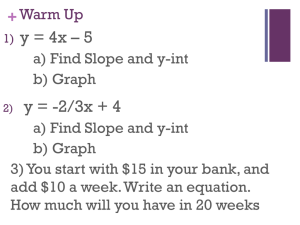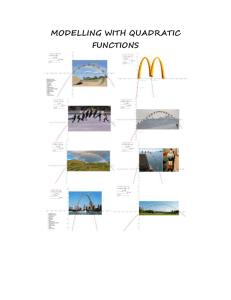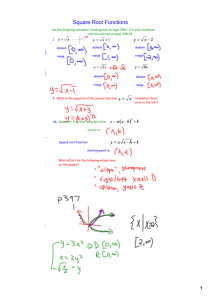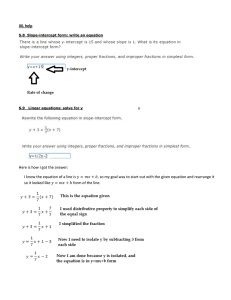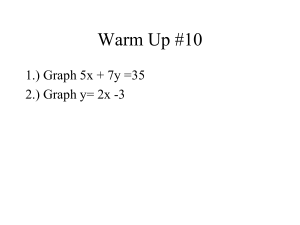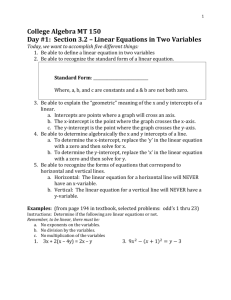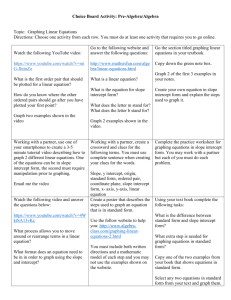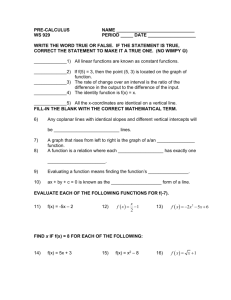Solving Systems of Equations - Garnet Valley School District
advertisement
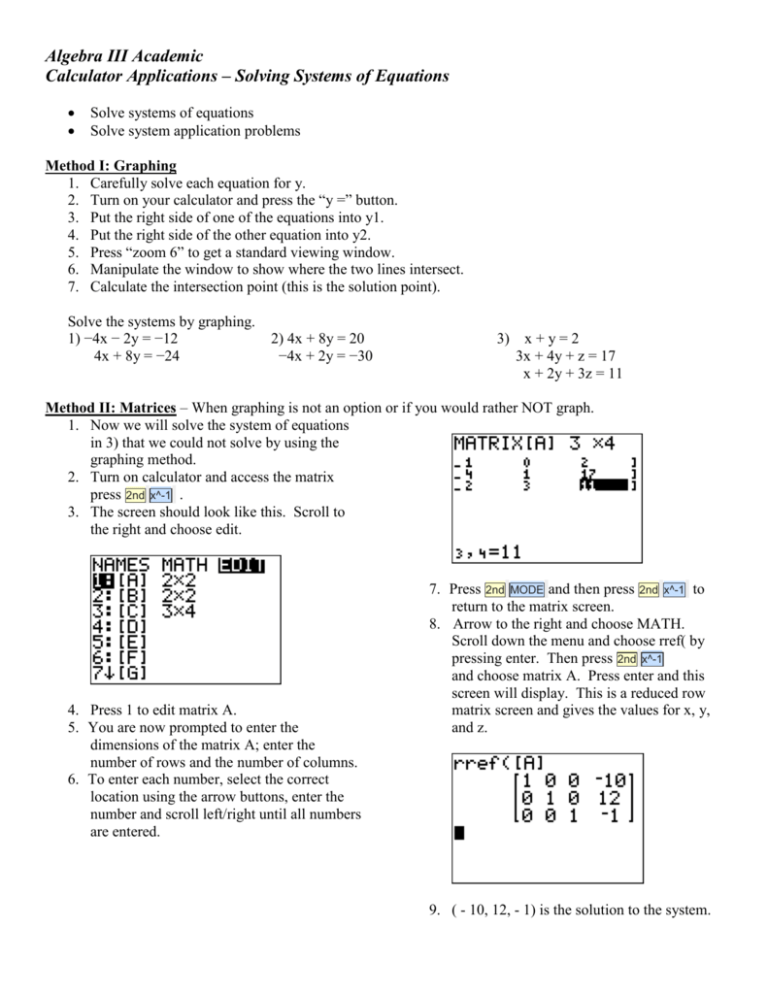
Algebra III Academic Calculator Applications – Solving Systems of Equations Solve systems of equations Solve system application problems Method I: Graphing 1. Carefully solve each equation for y. 2. Turn on your calculator and press the “y =” button. 3. Put the right side of one of the equations into y1. 4. Put the right side of the other equation into y2. 5. Press “zoom 6” to get a standard viewing window. 6. Manipulate the window to show where the two lines intersect. 7. Calculate the intersection point (this is the solution point). Solve the systems by graphing. 1) −4x − 2y = −12 4x + 8y = −24 2) 4x + 8y = 20 −4x + 2y = −30 3) x + y = 2 3x + 4y + z = 17 x + 2y + 3z = 11 Method II: Matrices – When graphing is not an option or if you would rather NOT graph. 1. Now we will solve the system of equations in 3) that we could not solve by using the graphing method. 2. Turn on calculator and access the matrix press 2nd x^-1 . 3. The screen should look like this. Scroll to the right and choose edit. 4. Press 1 to edit matrix A. 5. You are now prompted to enter the dimensions of the matrix A; enter the number of rows and the number of columns. 6. To enter each number, select the correct location using the arrow buttons, enter the number and scroll left/right until all numbers are entered. 7. Press 2nd MODE and then press 2nd x^-1 to return to the matrix screen. 8. Arrow to the right and choose MATH. Scroll down the menu and choose rref( by pressing enter. Then press 2nd x^-1 and choose matrix A. Press enter and this screen will display. This is a reduced row matrix screen and gives the values for x, y, and z. 9. ( - 10, 12, - 1) is the solution to the system. Algebra III Academic Calculator Applications – Solving Systems of Equations Classwork/Homework: Solve the systems of equations that follow. A. 3 + 2x = y − 3 – 7y = 10x B. - 14 = - 20 y – 7x 10y + 4 = 2x C. –x − y – 3z = – 9 −3x – 1 = z x = 5y − z + 23 D. 4x + 4y + z = 24 2x − 4y + z = 0 5x − 4y − 5z = 12 E. −7x − 8y = 9 −4x + 9y = −22 F. −4x − 2y = 14 −10x + 7y = −25 G. −x − 5y + z = 17 −5x − 5y + 5z = 5 2x + 5y − 3z = −10 H. 4r − 4s + 4t = −4 4r + s − 2t = 5 −3r − 3s − 4t = −16 I. 5x + 4y = −30 3x − 9y = −18 J. 3x − 2y = 2 5x − 5y = 10 K. x = – 4z – 19 y = 5x + z – 4 − 5y − z = 25 L. x − 6y + 4z = −12 x + y − 4z = 12 2x + 2y + 5z = −15 3y - 4 = 2 ( x +1) -3x - 5y =15 x=4 Domain: __________ Domain: __________ Domain: ___________ Range: Range: Range: __________ ___________ ____________ x – intercepts: ________ x – intercepts: ________ x – intercepts: ________ y – intercept: _________ y – intercept: _________ y – intercept: _________ y - 2 = 3x 2 - 6x y = 5x y = -2x 2 - 6x + 2 Domain: _____________ Domain: __________ Domain: ___________ Range: Range: Range: _____________ ___________ ____________ x – intercepts: ________ x – intercepts: ________ x – intercepts: ________ y – intercept: _________ y – intercept: _________ y – intercept: _________ Vertex: ______________ Vertex: ______________ Vertex: ______________ Axis of Symmetry: _____ Asymptote: __________ Axis of Symmetry: _____ Write the slope-intercept form of the equation of the line through (5, 13) and (−4, −1). a. Evaluate the equation when x = 3 b. What is the x – intercept? Write the equation of an exponential function that passes through (1, 4) and (3, 12 ). c. Evaluate the equation when x = 10. d. What is the y-intercept? Write the equation of a quadratic function that passes through (1, 0), (2.5, 8) and (4, 0). e. Evaluate when x = 0. f. What is the vertex? g. What is the line of symmetry?
